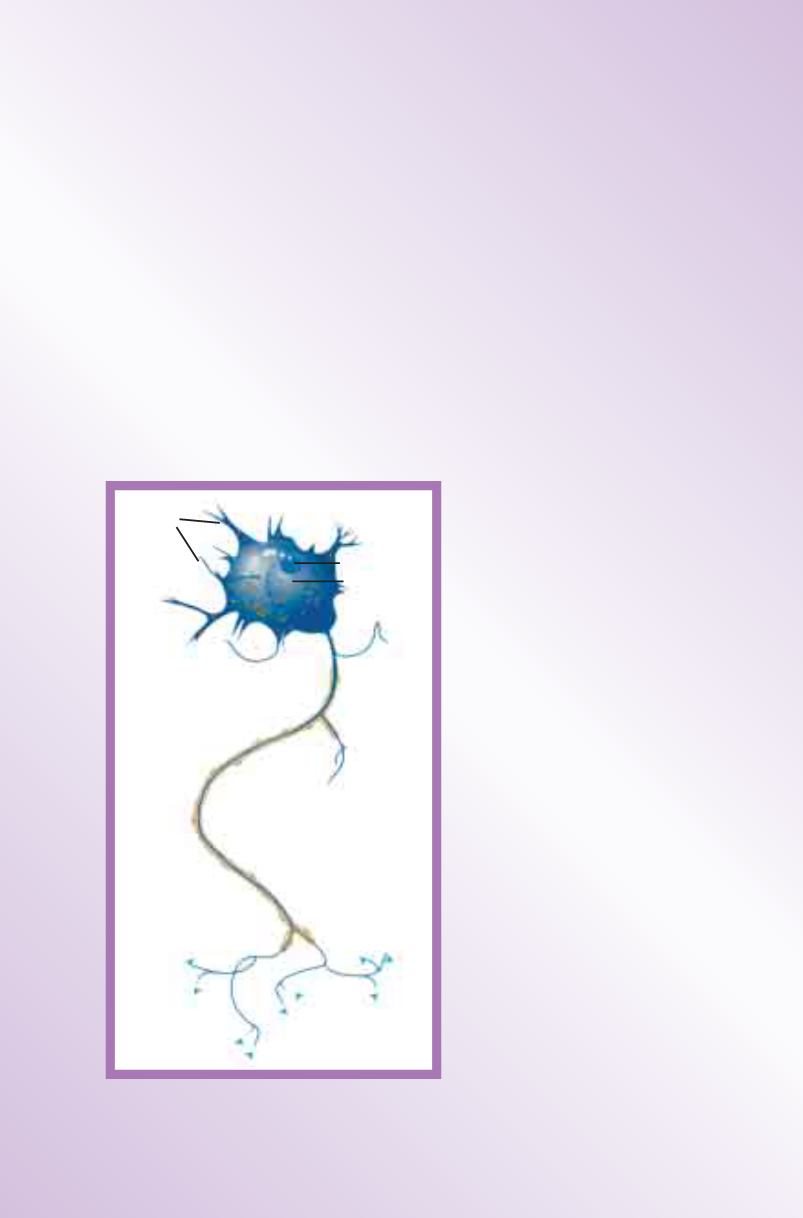
recognise the voice of your best friend and to perceive the
smell of hot chocolate.
The picture on the next page shows some children
who are talking, hearing, smelling, moving and sleeping
in the brain. Of course this is an imaginary picture, in-
tended to show the particular portions of the brain and
their functions. In reality, what the brain consists of is
nerve cells, which can be seen only under a microscope.
Do you think nerve cells
can see your favourite
toy or taste the flavour
of chocolate ice cream?
Certainly not. That is
because nerve cells are
composed of fine pieces
32
The cell on the left with the
fringe-like extensions is a nerve
cell (neuron). Billions of nerve
cells, interconnected through
these branches extending out
from the cell body, form a net-
work right through the body.
There are gaps between nerve
ends, and nerve signals are car-
ried across these gaps to other
nerve cells.
nucleolus
dendrites
nucleus


